In one of my classes at university, we are learning functional programming through SML/NJ.
I have been given an assignment which requires us to perform a number of operations on Binary Decision Diagrams. (conjunction, disjunction, not, etc.)
Based on this truth table
I have the following function defined
fun IfThenElse(p,q,r) =
if p then q else r;
Then, we have the BDD (ROBDD) datatype declared as such
datatype ROBDD = true
| false
| IfThenElse of string * ROBDD * ROBDD;
So far this is all fairly straightforward. I'm getting lost on actually operating on BDD's, for instance, creating an ROBDD which represents the conjunction of two ROBDD's.
My function declaration so far looks like this
infix bddAnd;
fun op bddAnd(first:ROBDD,second:ROBDD) =
...
It will be called with two ROBDD's, something like this
val conjunction = IfThenElse("p", true, false) bddAnd IfThenElse("q", true, false);
From here, I'm not really sure where to start. My professor has given us this hint:
Of course,
True bddAnd anyROBDDwill be justanyROBDD. To get the ordering: If you’re asked to compute(IfThenElse(p, ϕ, ψ) bddAnd IfThenElse(q, χ, θ))the proposition letter at the root of the resultant ROBDD will be either p or q – whichever is less. So you’ll need 3 cases:p < q,p = q, andp > q. Having determined the root, you recurse down the branches
The first part makes sense, but I'm left with two questions.
1. How do I determine the root of any ROBDD?
If it's just true or false, it doesn't have one, right? So there should be a special case for just being given a boolean? If we are given a more fleshed out ROBDD, like IfThenElse("p", true, false), how do I gain access to p, in the ROBDD structure? Note that the first argument of an IfThenElse will always be a letter.
2. How do I recurse through the ROBDD's?
I understand the basics of recursive functions in SML, but I'm confused on how to do it within the ROBDD structure, compared to say, lists. I'm guessing I need to build some sort of curried functions that operate on each argument in the ROBDD, but I'm really not sure how to structure it.
Apologies for the long winded question, but I'm really having a hard time understanding how to operate on the ROBDD structure. Any explanation would be very helpful, thank you!
EDIT:
After some syntax and renaming, my bddAnd function now looks like this
infix bddAnd;
fun op bddAnd (true, second) = second
| op bddAnd (first, true) = first
| op bddAnd (false, _) = false
| op bddAnd (_, false) = false
| op bddAnd ((left as (IfThenElse (prop1, true1, else1))), (right as (IfThenElse (prop2, true2, else2)))) =
if prop1 < prop2 then
IfThenElse (prop1, true1 bddAnd right, else1 bddAnd right)
else if prop1 > prop2 then
IfThenElse (prop2, true2 bddAnd left, else2 bddAnd left)
else
IfThenElse (prop1, true1 bddAnd right, else1 bddAnd left);
